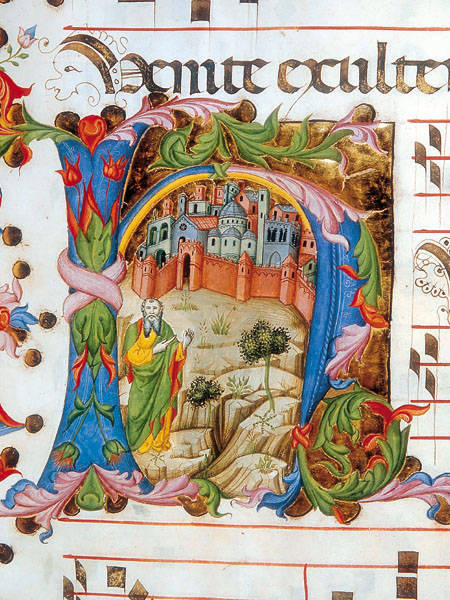Image Details

Erich Lessing
The prophet Isaiah stands before Jerusalem, depicted inside an initial letter H, for Hierusalem, in this 14th-century illuminated antiphonary, a book containing the chants to be sung by the choir during mass. According to Isaiah 1, the prophet lived in the eighth century B.C.E., but in chapters 40–66 of his book he foretold events that were still two centuries in the future—like the reign of the Persian king Cyrus (whom he called “messiah” or “anointed one”), the return of the Jews from exile and the rebuilding of the destroyed Jerusalem Temple. Isaiah’s foresight has traditionally been accepted as proof of his ability as a divinely inspired oracle. But, as William H.C. Propp explains, most scholars accept a much more mundane explanation.
